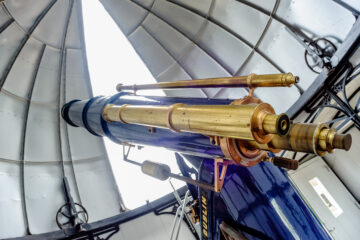The Armagh Observatory and Planetarium (AOP) has successfully captured images of the Tsuchinshan-ATLAS comet, a rare celestial object making its closest approach to Earth for the first time in 80,000 years. This comet, named after its simultaneous discovery by the Purple Mountain Observatory in China and the ATLAS astronomical survey, offers a glimpse into the ancient past of our solar system.
Comets are icy bodies that date back to the formation of the planets and the Earth. They typically reside in a distant spherical cloud surrounding the solar system, only occasionally venturing close to the Sun. As the comet approaches the Sun, its ice begins to thaw, releasing gas and dust that create a striking tail, giving the comet its ethereal appearance.
Speaking on the importance of this event, Dr. Apostolos Christou, Research Astronomer at AOP, said: “This is a truly remarkable opportunity for astronomers and the public alike. The Tsuchinshan-ATLAS comet last passed through the inner solar system during a time when early humans were migrating across the globe. To be able to observe it now, using modern technology, is a powerful reminder of our connection to the cosmos and the vast timescales involved in the life of these ancient objects.”
The Tsuchinshan-ATLAS comet is visible from the northern hemisphere as a naked-eye or binocular object over the next week, before it fades from view for many thousands of years. This rare sight is an extraordinary opportunity for both astronomers and stargazers.





1 Comment
Steve mccall · October 28, 2024 at 23:19
what a great photo in such. difficult lighting conditions
It reminds me of Halley’s comet in 85